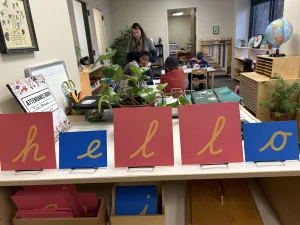One of the ironies of my life is that I was a straight-A student and rule-follower growing up in the public school system, and then, as an adult, threw out the rules of traditional education and started unschooling my own kids. But when it came to opening my own microschool for self-directed education, my rule-keeping nature led me to worry about compliance with governmental regulations. Unfortunately, these can vary greatly from state to state—even between cities—and they are not always easy to find from simple Internet searches.
Navigating local and state regulations is perhaps one of the most common concerns of potential microschool founders. There are many questions to ask, including:
- Where can a microschool legally operate?
- Can I legally run it out of my own home?
- How many students can I enroll?
- What special licenses or permits are required?
- Are there any safety inspections I need to pass in order to operate legally in my chosen location?
I dreamed of opening my home to a small group of homeschoolers for several years before I finally brought my vision to fruition in August 2024. While researching educational philosophies and self-directed learning models had invigorated me, the task of becoming the owner of a viable business felt daunting. As much as I would love to spend all my time envisioning and implementing ways to help my students learn, if I don’t give some time to ensuring that I meet my state and local laws, I am not truly creating a stable learning environment that my students will be able to return to year after year. I had to accept that I am a business owner as well as a passionate educator.
If it feels like researching and adhering to government regulations is taking a large bulk of your time, you are not alone. According to the latest Small Business Index Survey, 51% of small businesses say navigating regulatory compliance requirements is negatively impacting their growth, and almost 47% say they are spending too much time fulfilling regulatory compliance requirements. However, there are tools that can help you speed up the process.
The first tool I recommend is Yes. Every Kid. Foundation. This organization empowers educational entrepreneurs with free explanations of your state and local regulations, the different types of business structures, and site-related challenges including zoning, fire, health, and safety. After joining their free platform, I received one email that helped me feel like I knew who to call and what questions to ask.
Once I started making phone calls, I discovered that people are generally helpful. As an educator going against the current, it can start to feel like you expect pushback at every turn. The reality is, you are just a person starting a small business, and your local business office is used to having people ask questions about how to get a license, and how to operate their business legally, no matter what kind of business it is. In fact, they prefer you ask questions in an effort to be compliant. Aside from keeping laws that protect the city’s residents, business licenses are one way a city makes revenue—they want to help you get and pay for your license.
That being said, at the time I went to my local business office, my state had recently passed legislation to define microschools formally, including explaining how and where they could operate and how many students they could enroll. Although I would normally resist expanding government oversight and regulations, I found the clarity of this law empowering, and it ultimately led me to take the leap of starting my school.
Unfortunately, local government wheels turn slowly, and my city did not yet have a city ordinance that aligned with this new state law—the business office hadn’t even heard about it. I learned that because the city derives its authority from the state, it did ultimately have to comply with the new state law. However, this process has taken over a year to date and is still not finished. I applied for the closest type of business license they could offer me, even though it limited the number of students I could enroll. One thing I have learned in this process is to be flexible in how you structure your school in order to meet current regulations, and then to be vocal about encouraging changes over time.
I have found it very helpful to work with other microschool founders to navigate these bureaucratic processes that are all new to me. Libertas Institute is a local think tank in my state that promotes microschools and educational entrepreneurship. They have assisted me with moving my city forward on implementing the new state law regarding microschools. Similar organizations may be in your state. Ask around in microschool communities on social media, or visit State Policy Network’s directory of state-based think tanks like Libertas.
The last area of compliance to consider is your local school choice program. If your state has an education savings account (ESA) and you plan to accept funds from it for tuition payments, research those requirements directly from the program’s website. Each state differs in how it runs these programs, and it may have different definitions of a “qualified” school or vendor. They won’t necessarily match the requirements a state lists for a “private school,” often allowing for much more flexibility and innovation—perfect for microschools who tend not to fit perfectly into our commonly used categories for education entities.
While it may feel complex at first, and the risk of doing it wrong may feel high, don’t let the compliance hurdle keep you from your dream. Do reasonable research using these tools, ask questions, comply to the best of your understanding, and then move forward.
Even though I want to be a rebel educator, and to think outside the box in the classroom, I also want to be a successful business owner. So with respect to government compliance, I choose to follow the wisdom of Henry Wadsworth Longfellow, who said, “It takes less time to do a thing right than to explain why you did it wrong.”





